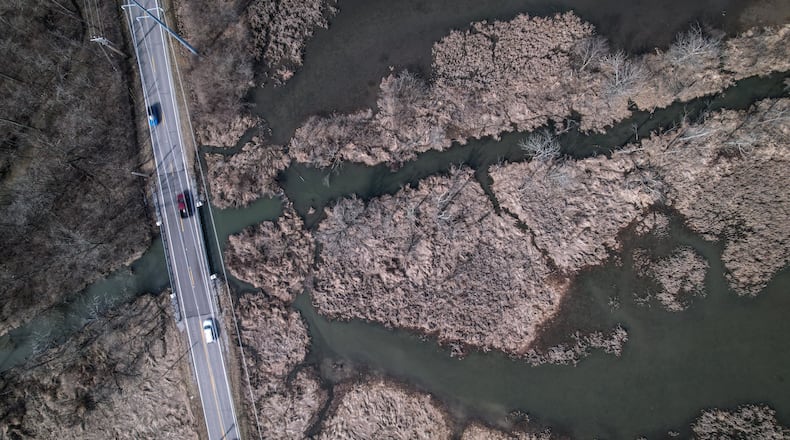The organization is also putting the finishing touches on 2,000 feet of wheelchair-accessible boardwalk through the reserve, said Executive Director Jacki Mayer, and has completed a refurbished observation deck and new surface trails.
“This will provide easy access to this amazing 56-acre property,” Mayer said.
Previously known as the Fairborn Marsh, the reserve was largely inaccessible to hikers before the boardwalk, as even the surface trails were flooded with water most of the year. Currently, the only access point to the reserve is a trailhead on the north side of a residential neighborhood, west of Hobson Freedom Park.
“It’s been accessible, but not in the easiest way,” Mayer said. “Lots of people go walk their dogs, there’s a great prairie out there and a scenic overlook, but we didn’t really let people know about it. Now we have a reason to.”
The 2,000 feet of boardwalk is part of the Spotted Turtle Trail, an effort to create a 15-mile continuous trail connecting the parks and reserves along the Beaver Creek wetland corridor, from Beavercreek’s Rotary Park in the south to Fairborn’s Siebenthaler Fen in the north.
The association also plans to add a bird blind, lots of new informational signs, two more viewing platforms, and benches, Mayer said.
The Beavercreek Wetlands Association also recently purchased 23 acres next to the Dave Nolin Wetland Reserve, just south of the Amon reserve on New Germany Trebein. Previously used as farmland, the Association plans to restore the wetland there, planting 1,500 trees and shrubs over the next few years.
“It’s very walkable. There were paths you could walk, surface trails, but now it’s going to be much more accessible to everyone. Whether you have mobility issues or not, it’s going to be much easier, and you’re going to get to see things you’ve never seen before,” Mayer said.
About the Author

